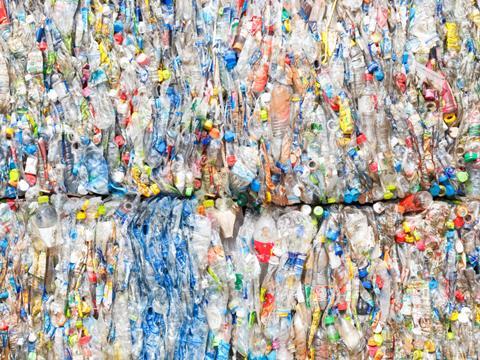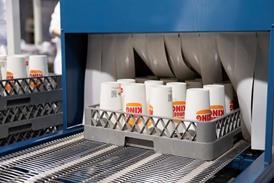
The next wave of EPR fees is set to bring in stricter fees, more stringent recyclability demands, and complex data requirements across Europe. Former Reckitt packaging director Arno Melchior explainswhy digitalisation is the key to surviving the next wave of EPR regulation.
The packaging landscape is changing, not gradually but in sharp regulatory leaps that are catching even seasoned players off guard. Across Europe, the rollout of Extended Producer Responsibility (EPR) rules is transforming everything from the design of packaging to the calculation of its costs. With stricter eco-modulation fees, mandatory recyclability thresholds, and mounting pressure for transparency, the cost of packaging is no longer just a materials issue. It is a data issue.
For producers and brand owners, this shift can feel like a minefield. But it is also a moment of rare opportunity. Alongside these challenges, digitalisation offers an equally powerful path forward – a way not just to comply, but to lead.
From data graveyards to strategic goldmines
At its core, EPR is about internalising the environmental costs of packaging. To do that well, businesses need visibility and accurate, structured, shareable data. That means moving beyond PDFs in shared folders or specs buried in emails. It means knowing what is in your packaging, where it is used, how it performs, and what happens to it after use. It also means using that knowledge strategically to make better choices, unlock eco-modulation bonuses, and avoid spiralling costs.
Arno Melchior, retired Global Packaging Director at Reckitt, knows this challenge intimately. After more than three decades leading global packaging efforts at one of the world’s best-known FMCG groups, he has seen the data gap firsthand and the damage it can do.
“What I would like people to take back is really this,” he begins. “While I was working, I got involved in many trade associations in the UK, Germany, and Brussels. You must always consider the large companies, such as P&G, Unilever and Reckitt, as well as other multinationals are data-driven. They have a lot of data.”
“But then you see the small and medium-sized companies,” Arno continues, “and often they don’t have proper specification systems. They get a PDF from their supplier and put it somewhere, maybe a printout in a folder or a digital folder. That’s where the specification lives.”
This lack of digitalisation becomes critical under evolving regulations. “Then things come up, like now in the UK with EPR. Suddenly they think, ‘Oops, how do I get this data? Now I need to report something. How do I do this?’ And nothing is really digitised. I say it sits in the data graveyard. That’s something I want people to understand, especially smaller businesses.”
He believes that one of the most important steps any business can take is to assign a clear owner to packaging data. “It’s very important to have a person who deals with packaging. Whether full-time or part-time, maybe someone who covers quality and packaging, but they need to manage packaging data properly.”
That is especially true in the context of eco-modulation, the incentive structure that rewards recyclability with lower EPR fees and penalises non-recyclable formats with higher ones. “That becomes more and more important, especially now with RAM, where you get a bonus with eco-modulation. You get your bonus when you have recyclable packaging and pay higher fees when your packaging isn’t recyclable. That will have a big impact on finances.”
The complexity is increasing fast. “We need more and more data,” says Arno. “It’s not enough anymore to know a bottle is made of PET or HDPE. We need to know what makes up the HDPE or PET, what’s in the masterbatch, and what substances it contains. Soon, we’ll need a substance breakdown of our packaging, and that’s where suppliers and their suppliers come in. The whole value chain needs to work together, otherwise we don’t get the data.”
Educating the industry, empowering the consumer
But even the most sustainable packaging can’t make an impact if consumers don’t understand it, or worse, ignore it. “There is still a lot of greenwashing,” Arno admits, “and retailers are becoming better at spotting it.
But consumers? I don’t really believe they look at the sustainable aspect. When I talk to friends and family, I’m not sure they really take care of it. They look at the price, yes. However, they often don’t even know what it means. What does bio-based mean to them? What does 30 per cent recycled content really mean?”
Education remains a critical, and often overlooked, part of the picture. “I try to educate my wife,” he adds, “but she says, ‘I can’t be bothered. I want to use the product.’ And with all the labels and icons on packaging, even specialists get confused. What is the difference between all the different recycling labels? I think the industry has confused consumers in the past.”
The latest EU Packaging and Packaging Waste Regulation (PPWR) aims to address some of that confusion with tighter guidelines around recyclability labelling. But as Arno points out, implementation isn’t always straightforward.
“There are lots of discussions, should labelling have text or not? Should it be coloured or uncoloured? The EU says the minimum size of a recycling label should be one by one centimetre. That’s fine for a 750 ml bottle, but impossible for something small like a lipstick. For small, one-colour printed packs, how do you put a coloured label? We need clear, common signs to inform consumers about whether and how they can recycle something. That’s essential for improving recycling.”
These insights are not theoretical. Arno speaks from deep, hands-on experience. “I’ve been to many MRFs (Materials Recycling Facilities), the first in 1992. Soon afterwards I visited for the first time a glass recycler. I learned that labels on glass don’t just burn off; the adhesive area is waste and gets thrown out with the glass. That was eye-opening.”
Such learnings continue to inform new initiatives. “We’re looking now at how to make glass bottles, like Gaviscon, more recyclable. It helps a lot if the whole industry, the whole value chain, comes together.”
It is also a reminder that EPR is a global concern and digitalisation must scale accordingly. “If someone collects data just for the UK, I say, ‘Forget it.’ That might help a small UK-only company, but for us, even Europe is too small. Ideally, you cover all countries where EPR applies.
And not only EPR, with initiatives like the Ellen MacArthur Foundation, you need global data. Wherever you have a factory, even without EPR, you need to know your materials and tonnage.”
From compliance to competitive edge
Tools like Recyda are stepping into that space, empowering producers with software that maps out EPR fees, recyclability scores, and environmental data across markets. “Tools like Recyda, which show the fees in different countries, allow you to calculate costs for different packaging variants.
The cost of EPR is now so high you can’t ignore it anymore. It’s a considerable part of your turnover. You need to consider ways to reduce this cost. The cheapest way is to consider it early in new projects and rule out expensive options with the right predictive tools.”
For Arno, part of the solution lies in rediscovering the value of in-person learning and industry collaboration. “Events like London Packaging Week are important opportunities to discuss issues and discover innovations. When I was a young engineer, I planned visits to fairs based on who was exhibiting, but you miss a lot that way. Now I walk aisle by aisle, meeting people, asking questions, and finding new ideas. That’s why I’ve always enjoyed going to fairs.”
Arno will bring that experience to bear at London Packaging Week this October, where he joins a panel alongside Vivian Loftin of Recyda. Their talk, “Digital tools and data strategy: How to future-proof your business for EPR”, takes place on Wednesday 15 October, 2:00 to 2:30 PM, as part of the Future-Proofing Business programme. The session promises a deep dive into how digital infrastructure, smart specifications, and strategic foresight can help producers not only stay compliant, but thrive.
Because in the end, the future of packaging will not be decided by policy alone. It will be shaped by those who are ready to lead it. Those who see beyond compliance and understand that data is not just about control, but creativity. Not just regulation, but reinvention.
If you liked this story, you might also enjoy:
The ultimate guide to the Packaging and Packaging Waste Regulation in 2025
How are the top brands progressing on packaging sustainability?
Everything you need to know about global packaging sustainability regulation in 2025
The key to increasing the use of reusable packaging in supermarkets

















No comments yet